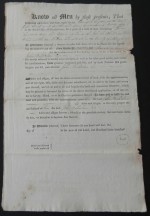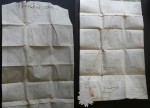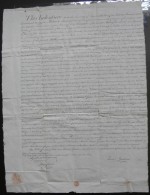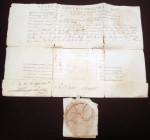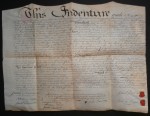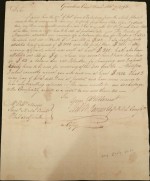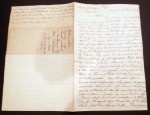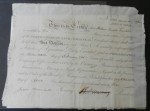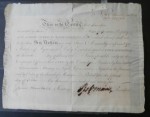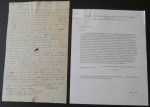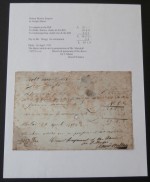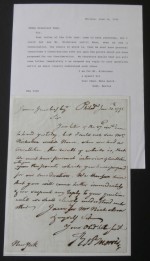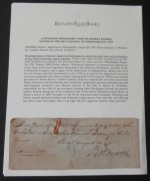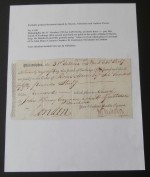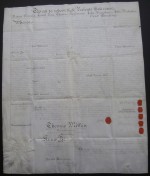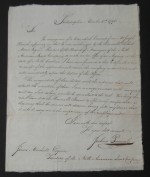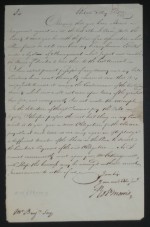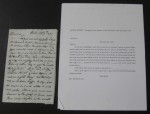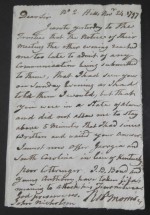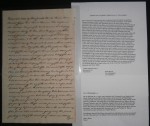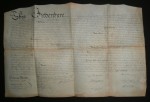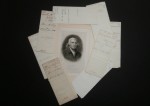by JAMES J. REIS
A little known story in American History is that of Robert Morris and his involvement with the North American Land Company. The N.A.L.C. was, and is considered, the largest land trust in American History, and is one of the first publicly traded Real Estate companies.
In the mid 1700’s Morris, an extremely wealthy Philadelphia merchant, backed the Continentals from the onset against his native countrymen, England. If the Colonies had lost their effort for independence, we would certainly live in a different world today.
Morris, known as the “Financier of the American Revolution,” found inventive ways to fund the Revolution, and; kept his friend George Washington and his troops fed, clothed, and armed during the long war with England. In the end, the Americans prevailed.
No doubt feeling exuberant after the war, Morris turned from a Merchant Prince to become a banker, and subsequently Real Estate Investor. Always the entrepreneur, Morris founded the Bank of North America, the first commercial bank in the United States. Never lacking for new business interest, by the late 1780’s he was a huge landowner and speculator. He believed in European expansionism to the Americas and purchased inexpensive land in rural Pennsylvania and New York for as little as 10 cents an acre.
Pretty soon he was in the same situation that many Real Estate Investors were in during the late 1980’s, and he started to look for a way to settle with his creditors. Instead of calling it quits and doing what he should have done by going back into the Mercantile Trade Business, he bought more and more real estate along the Appalachian Mountain chain from Pennsylvania to Georgia.
By the mid 1790’s Morris and 2 of his partners, James Greenleaf and John Nicholson, pooled their land and formed what must have been a very novel idea in its day, a land company called the North American Land Company. The purpose was to raise money by selling stock secured by the real estate. Six million acres were put into the trust in rural Pennsylvania, Virginia, North and South Carolina, Georgia and Kentucky. Formed on February 20, 1795 the partnership set out to sell stock for $100 per share. Every share represented 200 acres of real estate. Before you bought the land you got a prospectus, which outlined the company objectives and benefits. The stock promised a return of 6% per annum for 15 years at which time the land hopefully would have appreciated and the accrued value would have been given to the shareholders.
Well, like the late 1980’s the 1780’s looked like a real estate boom, but by the mid to late 1790’s real estate investment was a bust. Rural locations and timing certainly added to the real estate bust. Morris sent his son-in-law, James Marshall (the brother of Chief Justice John Marshall), to Europe to sell stock. Things did not go well for Marshall and the other agents, as Europe was gearing up for the Napoleonic Wars, and real estate speculation was not to be trusted. Morris also had serious problems with poor titles and creditors looking for payment. Things looked pretty bleak for Morris by 1797. So bleak that he was house prisoner in his own home “The Hills,” which is near Boat House Row along side the Schuylkill River in Philadelphia.
Morris finally gave in, left his wife and six grown children, and went off to an unknown future in Debtors Prison. To think that someone who was once the wealthiest man in America, now in his 60’s, someone who signed the two most important documents in History, the United States Constitution and the Declaration of Independence was now off to fend for himself in prison. Entering prison in February 1798, he writes to his creditors and partners often up to 10 to 20 times a day. In a personal letter to his son Thomas he asked how his wife and son William were doing (during the yellow fever epidemic of 1798 that killed 10% of the Philadelphia population). Two weeks later his grown son and business associate William was dead from the epidemic.
Morris languished in prison for 3 ½ years while his partner, John Nicholson, died there less than a year after entering prison and his other partner James Greenleaf spent one year in prison.
Morris was the Merchant Prince who died in 1806, a pauper, in a rented house while being subsidized by a pension or annuity given to his wife Mary from the Holland Land Company in compensation for her signing away her dower rights to land.

